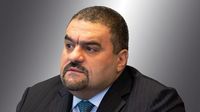On April 8, 2025, the world of exchange-traded funds (ETFs) witnessed significant developments as several prominent asset management firms launched innovative products aimed at catering to evolving investor needs. Notably, iM Global Partner (iMGP) unveiled the first managed futures UCITS ETF classified as Article 8 under the Sustainable Finance Disclosure Regulation (SFDR). This fund, known as the iMGP DBi Managed Futures Ex-Commodities Fund R USD UCITS ETF (MFA8:FP), distinguishes itself by excluding direct exposure to commodities, focusing instead on equities, fixed income, and currencies. This approach aims to provide diversification for investors looking to steer clear of commodity involvement.
According to iMGP, the fund is designed to meet the rising demand for sustainable investment solutions while ensuring that investors can still achieve diversification across traditional asset classes. With the growing emphasis on sustainability in finance, the launch of this ETF marks a significant shift in the managed futures strategy landscape, as it aims to align with sustainable investing principles.
Meanwhile, J.P. Morgan Asset Management (JPMAM) made headlines by announcing the local registration of its flagship equity premium income ETFs in Singapore. The ETFs include the JPMorgan US Equity Premium Income Active UCITS ETF (JEPI), the JPMorgan Nasdaq Equity Premium Income Active UCITS ETF (JEPQ), and the JPMorgan Global Equity Premium Income Active UCITS ETF (JEPG). These products are now accessible to Singapore investors following the approval from the Monetary Authority of Singapore (MAS).
These actively-managed UCITS equity ETFs are crafted to deliver attractive distributable yields while capturing significant portions of the returns associated with their respective benchmarks: the S&P 500 Index for JEPI, the Nasdaq-100 Index for JEPQ, and the MSCI World Index for JEPG. The ETFs also incorporate an options strategy to generate income while minimizing portfolio volatility. Philippe El-Asmar, head of APAC ETF, digital & direct at JPMAM, stated, "The combination of income generation and downside risk management makes them highly appealing to individual and institutional investors. We are excited to extend our global active ETF expertise and these unique solutions to Singapore investors."
Jacklyn Goh, head of Singapore intermediary business at JPMAM, added that this launch provides another innovative investment vehicle to meet the evolving needs of investors in Singapore who are seeking income and attractive opportunities globally. The APAC ETF market has shown robust growth, with assets under management (AUM) reaching $1.8 trillion and growing at an annual rate of approximately 24%, significantly outpacing other regions.
Goldman Sachs Asset Management and BNP Paribas Asset Management are also stepping into the competitive active ETF market in Europe, launching systematic active equity suites. Goldman Sachs plans to introduce its first active equity ETFs, which will include five different funds: Goldman Sachs Alpha Enhanced Europe Equity Active UCITS ETF, Goldman Sachs Alpha Enhanced Japan Equity Active UCITS ETF, Goldman Sachs Alpha Enhanced US Equity Active UCITS ETF, Goldman Sachs Alpha Enhanced World Equity Active UCITS ETF, and Goldman Sachs Alpha Enhanced Emerging Markets Equity Active UCITS ETF.
BNP Paribas Asset Management is set to debut its first alpha-seeking active ETFs, which will consist of one active equity ETF and three active fixed income ETFs, all domiciled in Luxembourg. Lorraine Sereyjol-Garros, global head of development for ETFs and index funds at BNP Paribas AM, noted, "We started our active ETF journey in August last year with a very innovative approach, applying our ESG active methodology while targeting beta market exposure. We now plan to launch a set of active ETFs targeting alpha creation."
As the active ETF market continues to evolve, JPMAM currently holds more than 56% market share for systematic active ETFs by the end of 2024, indicating its strong position in this growing sector. Other fund promoters are also making strides, with firms like DWS focusing on systematic active strategies for future ETF launches.
In a further expansion of the ETF landscape, Lazard Asset Management announced the launch of its first three actively managed ETFs in the United States on the same day, April 8, 2025. These ETFs provide access to Lazard’s specialized investment capabilities across three distinct strategies: Equity Megatrends, Japanese Equity, and Next Gen Technologies.
The Lazard Equity Megatrends ETF (Nasdaq: THMZ) aims to capture return opportunities from global megatrends that will shape the future economy. Portfolio Manager Steve Wreford emphasized the importance of adapting to the unprecedented pace of change in the world, stating, "Technological, demographic, and geopolitical shifts are reshaping the investment landscape as a result. These long-term structural shifts represent an opportunity for investors adapting for the future."
The Lazard Japanese Equity ETF (Nasdaq: JPY) seeks to capitalize on growth opportunities and market inefficiencies in Japanese equities. Portfolio Manager June-Yon Kim highlighted the significant economic and policy changes in Japan, noting that these shifts are helping companies recapture growth after decades of stagnation. The fund aims to leverage these changes to maximize returns.
Lastly, the Lazard Next Gen Technologies ETF (Nasdaq: TEKY) focuses on high-growth and profit-generating equities that capture value driven by productivity, AI, and automation. Portfolio Manager Tjeert Keijzer remarked, "Automation has been a core driver of productivity and economic growth for centuries, typically fueled by key technological advancements at specific points in time." TEKY aims to provide investors with targeted exposure to innovation leaders in the AI technology space.
In summary, the launches by iM Global Partner, J.P. Morgan, Goldman Sachs, BNP Paribas, and Lazard mark a pivotal moment in the ETF market, showcasing a trend toward innovative, actively managed products designed to meet the diverse needs of investors. As the landscape continues to evolve, these firms are positioning themselves to lead in a competitive environment, offering unique solutions that blend traditional investment strategies with modern sustainability and technology trends.




